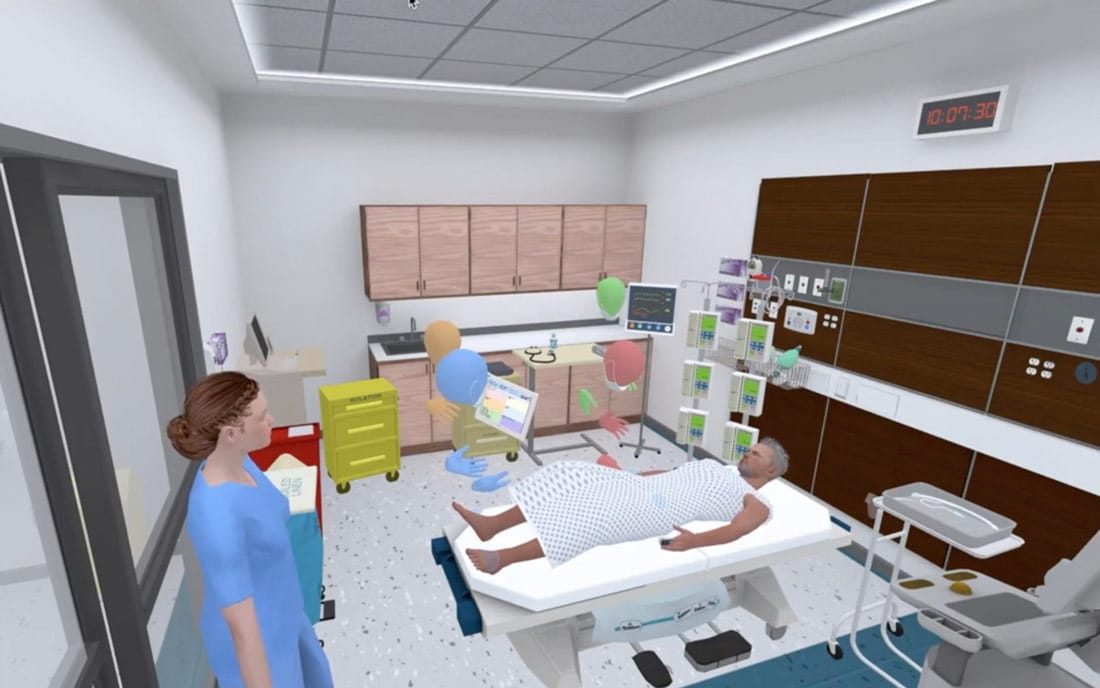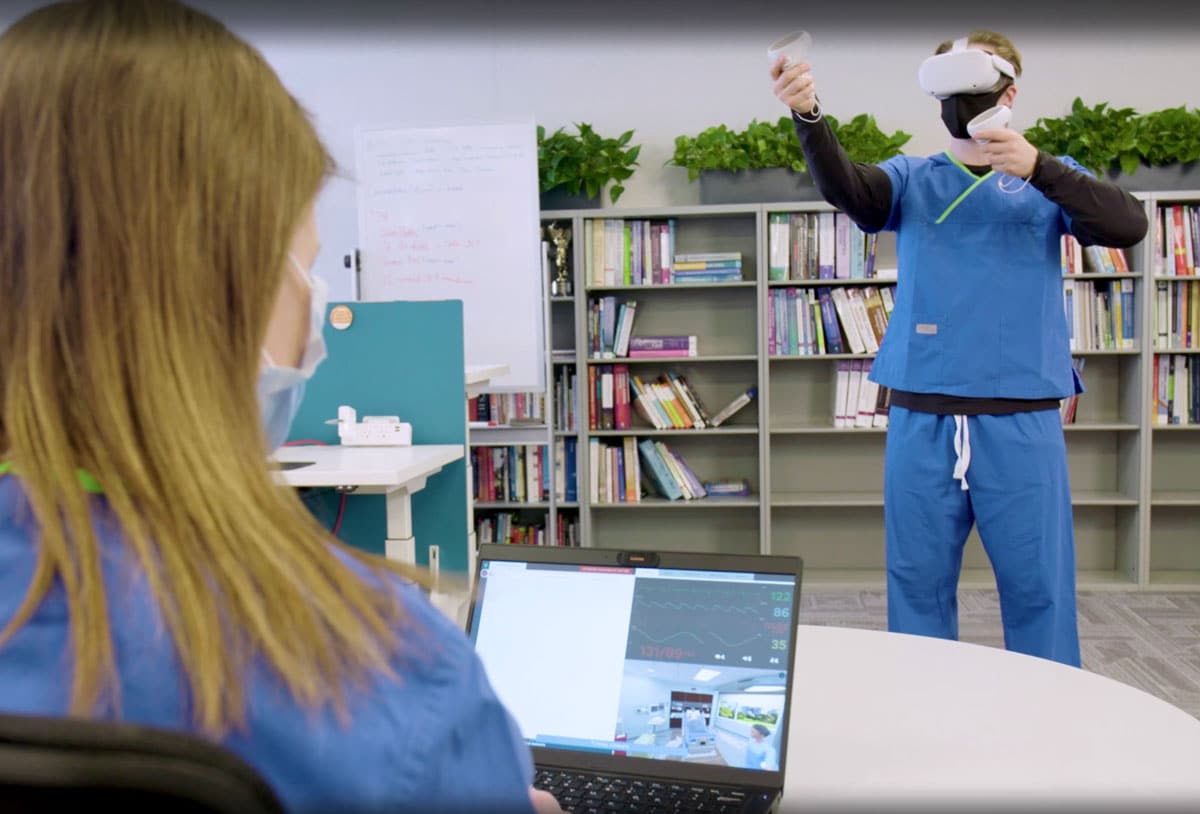
Virtual reality (VR) simulation training
Clinical and preclinical VR simulations to expand training opportunities
Increase patient safety

During simulation training, emergency situations, rare scenarios and routine measures are being practised. Since the training is not conducted on the patient, staff and teams from nursing and medicine are optimally prepared for everyday life – and patient safety is increased at the same time.
The need for simulation training continues to grow due to increased emergency situations and ever-changing teams. However, the construction and expansion of simulation centres is very resource-intensive; due to the pandemic, there are currently additional restrictions on implementation.
New technologies make it possible to conduct team simulation training in virtual reality (VR) in a way that is resource-efficient and independent of time and place.
New training opportunities in virtual reality (VR)
In virtual reality, simulation trainings can be carried out independent of time and place. In a computer-generated room (similar to a game), it is possible to create any setup and scenarios that can then be experienced via a VR headset. As with classic simulation training, the focus here is on practical learning – alone or in a group.


VR simulation training requires neither a special simulation centre, nor a simulation mannequin, nor a video briefing system. Simulation training in virtual reality does not require a specific room. The participants only need a VR headset and – depending on the situation – some free space to move around in order to be fully immersed in the training scenario. The trainer controls the scenario as usual via the PC.
VR simulation training thus enables resource-saving learning.
Benefits of Virtual Reality Medical Simulation:
Preclinical simulation training in virtual reality
Simulations are becoming more and more important for basic, further and advanced training in rescue services, as the potential for highly effective and efficient training has been recognised. This is also reflected in the legal requirements for training, which increasingly recognise simulation training. Virtual reality and augmented reality can be used to expand the training offered and make them accessible to more learners.
Features of Virtual Reality Simulation Training
Clinical simulation training in virtual reality
In the clinical environment, as well, simulation training – in addition to direct patient learning – is the best option for training clinical skills and teamwork in a lifelike manner. Emotional engagement leads to sustainable learning results – an effect that is further enhanced by the immersion in virtual reality.

Clinical VR simulation training enables location- and time-independent training – even without a fixed or own simulation centre. Studies show that in addition to skill and scenario training, soft skills are trained particularly successfully due to the increased concentration and immersion in virtual reality.
Which scenarios can be carried out as a virtual reality training?
Who can utilise virtual reality simulation training?
